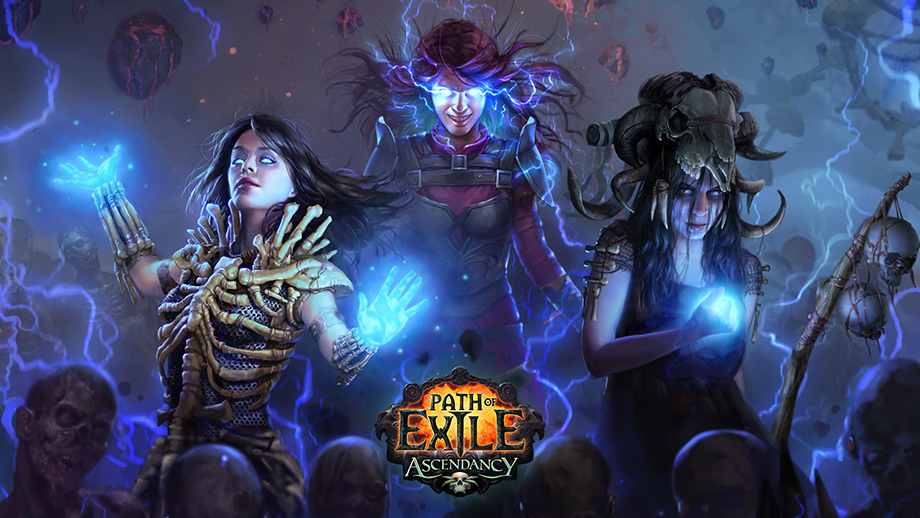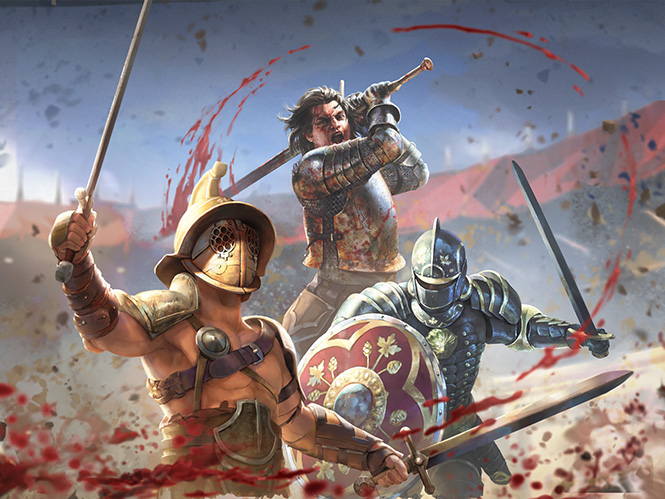Procedural Narrative: The Future of Video Games
- Edwin McRae
Procedural Narrative: The Future of Video Games
Indie Game Dev, Bryan Cohen, recently asked me this rather ballsy question about narrative design.
Bryan: "Given the recent trend of procedural generation in games that often have very shallow storytelling, what role do you see procedural and emergent narrative taking in the future, and what sort of challenges and problems need to be solved before we (as developers) can deliver a compelling experience going this route?"
Ok, first up...sorry, Bryan, I'm not going to even attempt to tackle the 'emergent narrative' side of the question because I think that procedural narrative and emergent narrative are two very different things. Maybe I'll explain the differences in a follow-up article. In the meantime, let's focus in on Procedural Narrative and the potential future it has in video game storytelling.
I personally think that procedural generation is a wonderful breath of fresh air, blowing away a lot of stale thinking and stale storytelling in the games industry. To be honest, it freaks the shit out of many a narrative designer. Why? Because it's impossible to rely on tried and true structures like "3 Acts" and "The Hero's Journey" when anything could happen in the game at any time. Suddenly, the player isn't just going along for the ride on a nice, smooth character arc. This isn't Booker DeWitt coming to terms with his past. This isn't Joel and Ellie building a relationship only to have the hostile world threaten to tear it apart.
With procedural generation, the game is reacting to what the player does, not what the character is expected to do.
The Player = Protagonist
The Game = Antagonist
The Story = What happens as the Protag struggles to overcome the Antag.
There's no predictable plot here, because the Protag can succeed or fail in a myriad of ways. Plot is replaced by Story Experience.
Ok, luckily I can now plunder my own book, Narrative Design for Indies: Getting Started, to explain what a 'Story Experience' is and how it relates to procedural generation.
Procedural Narrative = Story Experience
I once heard narrative design likened to theme park design. A park ride might have a story context, a must-have for any haunted house or ghost train ride, and the ticket-holder then explores that context, feels part of that miniature world for a bit. It’s a tough thing to explain in abstract so let’s get concrete with one of my favorite ever Indie RPGs. Darkest Dungeon.
Being a rogue-like RPG, Darkest Dungeon is all about the experience of delving into Lovecraftian realms, surviving by the skin of your teeth and going completely bonkers in the process. There is no ‘plot’ beyond the usual fare of ‘mad overreacher explores where he should not and unearths an ancient evil that then corrupts the entire place’. Sounds like a hundred games, stories and novels already, right? And it would’ve been no different to the rest had not the creators stopped right there and said, “Plot, shmot! Let’s give the player a story-rich experience instead.” I’m sure that wasn’t their exact words, but the spirit of that statement permeates almost every element of Darkest Dungeon.
Darkest Dungeon wrangles its world design, glyphs and dialogue in such a way as to totally wrap the player in story without ever demanding that they follow any sort of plot. As soon as a player follows a plot then their choices are limited. Darkest Dungeon’s limits are mechanical, not narrative. You can pretty much engage with whichever elements you want, whenever you want, within the confines of what’s possible for you at the time. I’m going to go into the specific elements in more depth later on. For now, let’s dip our tootsies in this narrative bloodbath so we can get an overall feel for what Darkest Dungeon does.
Your progress in Darkest Dungeon is defined by character levels, character health (both physical and mental) and how much of the game’s hometown, The Hamlet, you’ve managed to rebuild and upgrade. In fact, the hamlet itself is as much an RPG character as the adventurers that use it as their base of operations.
For a start, the adventurers themselves are the sort of troubled types you’d find in any Lovecraftian horror.
Houndmaster - “A lawman and his faithful beast. A bond forged by battle and bloodshed.”
Leper - “This man understands that adversity and existence are one and the same.”
Antiquarian - “She searches where others will not go...and sees what others will not see.”

That’s all the backstory you get, and that’s all the backstory you need in a game like Darkest Dungeon. Each adventurer is a lump of clay for the player to mould. Different varieties of clay, yes, with different properties, but with plenty of scope for the player to stamp them with personality and sculpt them with experience.
And where does all of this personality and experience come from? Well, mostly from the horrors the adventurers have to deal with in those antediluvian depths. Frightening monstrosities, eldritch curses, itchy and icky illnesses, and the ever-pervading gloom itself.
Darkest Dungeon needs no character arcs nor ticking plot devices. It has game mechanics! Each adventurer has a Stress counter. When that stress counter rises too high, the adventurer in question ‘cracks’ and develops some rather peculiar psychological maladies. Selfishness, masochism, hopelessness, irrationality and paranoia...this list of afflictions go on. And the result? The adventurers actually start to behave differently during combat. A ‘masochist’ will race to the front of the party of their own volition so they can invite the most damage upon themselves. An adventurer who is feeling ‘hopeless’ may decide to skip their combat turn. A ‘fearful’ adventurer will shift themselves to the back of the pack whilst ranting in such a terrified manner that it raises everyone else’s stress counts. An ‘abusive’ adventurer will cast aspersions on his party-mates, resulting in ever further increased stress counts.
In a nutshell, or nutcase in this instance, each character’s story context is expressed through mechanics and succinct text bubbles. No expensive voice over (apart from that wonderfully creepy narrator), no plot to adhere too, and yet the group dynamics are as clear and complex an expression as one might find in a soap opera.
Rogue-like RPGs are renowned for their procedurally generated environments and MOB encounters. Darkest Dungeon is renowned for its procedurally generated story.
Procedural Narratives require Nonlinear Thinking
But how do you ‘write’ for something like that?
For a start, you switch off all the lights in your plot brain except for that one desk lamp at the workstation called Department of Cause and Effect. And then you get down to the business of writing tiny scripts, sometimes just one line, that capture specific moments of cause and effect in your game.
For instance, let’s look at some PC Area Dialogues from Path of Exile, the lines that a selected player-character will say the first time they enter a new area or perhaps when they kill a Unique Mob or Boss within that area.
The Witch

Killing Hillock:
Too stupid to know he was dead already.
Entering Fellshrine:
Looks like the faithful have gone to that ‘better place’ of theirs.
Killing Fidelitas:
What a pretty creation!
Entering Act 3, City of Sarn:
A big, dead city. My favorite.
Entering Sewers:
Humanity is gone yet the stink remains.
Entering the Marketplace:
Screams upon screams, as soft as the faintest whisper.
Entering Catacombs:
The ‘worthy’ like to bury their secrets deep.
Entering Ebony Barracks:
Damnation has no wrath like a witch scorned.
These lines are spread out right across Path of Exile, but each is a piece of the jigsaw puzzle that is the Witch’s character. We learn about her as a ‘person’ only when she reacts to elements in the game world, and at these points we also get the chance to add a little more meaning to the environment. We can include scents and stenches that can’t otherwise be expressed. We can add insights into cultures that would otherwise have to be explained through story glyphs.
”Damnation has no wrath like a witch scorned.”
This is a play on the commonly heard phrase, ”Hell hath no fury like a woman scorned.” So there’s a ‘feminine vengeance’ energy to it. And it’s directed at the Templar baddies who, as patriarchal religious zealots, tend to send witches into ‘damnation’ upon a burning pyre. Yes, a right lovely bunch, the Templar of Oriath. A ‘cross’ between Bible Belt evangelists and the Spanish Inquisition.
“The ‘worthy’ like to bury their secrets deep.”
Yes, another potshot at devout Templar hypocrisy.
Each player character in Path of Exile has almost one hundred lines of dialogue, tailored as character-informing reactions to the environments and monsters that inhabit them. There are seven PCs to choose from so we have a total of roughly seven hundred lines. That’s a lot of tiny little pieces of narrative confetti, but when added together throughout the course of the game, they coagulate into seven fully-formed characters, each with a unique perspective on their journey through Wraeclast and beyond.
To create a one-hundred-line reaction script like that, we can look at each environment, one by one, and write each line as we go along. It’s the same with the Boss-kill dialogues and any other incidentals, like running out of Mana or having a full inventory. Every line is drawn from the context in which it will be said.
Templar PC - “I’m no beast of burden.”
In the case of Path of Exile, we can show some character development because there’s a rough order to the areas that can be entered, and to the bosses that can be slain. If the player progresses through the game ‘as expected’ then it’s possible to even create some form of plot. But ‘expected’ is not the same as ‘predictable’ when it comes to player behaviour. Yes, you can exhaustively playtest and peer like a soothsayer into the entrails of your backend stats, but if there’s any freedom in your game then players’ do things in whatever order is more convenient and enjoyable to them.
Some bosses can be avoided rather than slain. Some side areas might not be entered until the player has completed all of the main ones. Quest items might be carried around for several Acts before being handed onto the appropriate NPC. So every line has to make sense in isolation while also fitting together into a whole that feels right for our PC’s personality.
And to do this, we snap our neatly linear ruler in twain and wrap the halves upon our desk like drumsticks as we focus on what’s really important.
Procedural Narrative needs Theme and Tone
The Duelist

On waking up on the beach:
Sand and the faint aroma of death. I think I’ve found my new arena.
On Killing Hillock:
Twice as big, twice as dead.
Entering The Southern Forest:
Good to feel the sun on my face again.
Entering the (Fellshrine) Crypt:
Smells of dust and dead devotions.
Killing Fidelitas:
I’m not sure if I’ve just killed a man or squished a bug.
Entering City of Sarn:
This must have been a truly glorious city in its day.
Theme = Glory.
An ongoing obsession with achieving and maintaining self-glorification.
Tone = Quick-witted and light-hearted.
Charming and geared towards amusing others.
Once you know the Theme and Tone, you pretty much know how the Duelist is going to react in any given situation. He glorifies the stuff he likes and makes jokes about the stuff he dislikes. And as he gradually realizes the brutality he is inflicting in his quest for glory, and feels the emptiness of glory’s attainment, the glorification becomes less enthusiastic and the jokes a little darker.
The Duelist thinks of Wraeclast as a giant arena laid out for his own glorification. That’s his story, and the player finds that out by simply experiencing their exile in all of its gory glory.
Procedural Narrative in The Future
Bryan actually hit the nail on the head when he wrote this part of his question. "What sort of challenges and problems need to be solved before we (as developers) can deliver a compelling experience going this route?"
Compelling Experience = Story Experience

I'm acutely aware that I've only scratched the surface of what's possible with procedural narrative, and that's because I'm still working it out for myself. But one thing I'm sure of. If we strive to create story experiences with our video games rather than simply trying to tell a story, then procedural narrative is just going to get a whole lot more interesting and a whole lot more compelling!
If you would like to know about the difference between Procedural Narrative and Emergent Narrative, have a look at this article which explains my working definitions of these quite separate narrative design concepts.
Thanks for reading. :-)
Edwin

About Edwin McRae
Edwin is a narrative consultant and mentor for the games industry.
